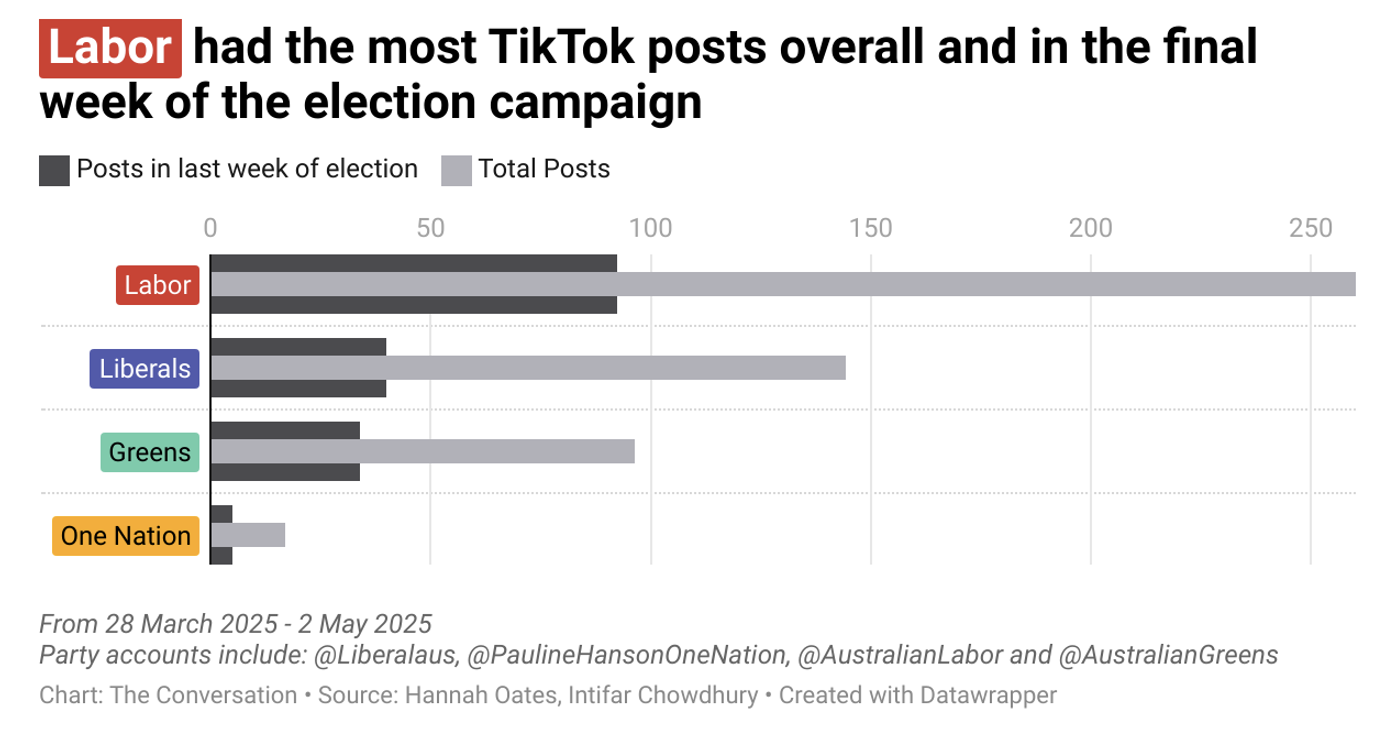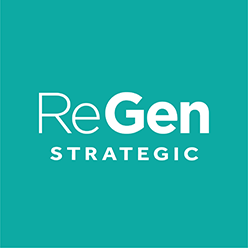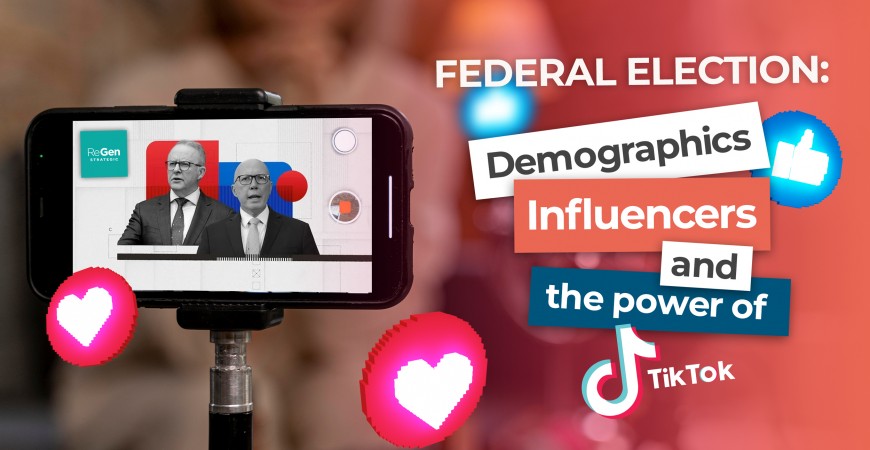Federal Election: Demographics, Influencers and the power of Tik Tok.
The results of the recent federal election are not just notable for the historic Labor win, it was also the first election when Gen X and Gen Y outnumbered boomer voters.
This is only going to accelerate. Gen Z and Millennials made up 47 per cent of the electorate in 2024. Boomers made up about 33 per cent. The Gen Z and Millennial demographic number will be more than 50 per cent by the next election – where they will represent a majority of the Australian electorate.
Follow the money
Younger voters are not getting their news through traditional sources. According to the University of Canberra’s Digital News Report, 60 per cent of Gen Z use social media as their main source of news. And many of these are reliant on social media influencers for content.
And, at the last Federal election, political parties invested more than $10 million into advertising on Meta (Facebook, Instagram) alone – not to mention the hundreds of TikTok reels, podcast appearances, YouTube, and other online avenues that were employed to directly communicate with younger audiences.
TikTok was very effectively employed and stood out to me as a key differentiator of this election. It was the first time that I had witnessed such a volume of these shareable, targeted and, sometimes strange, clips.
Research into effectiveness reveals that the Labor Party was the most active on TikTok, and also the most engaging – with an average of 10.5 per cent of the audience sharing, liking or commenting on their posts.

According to these researchers, this was due to a highly coordinated Labor campaign backed by serious resourcing and a keen understanding of platform dynamics. They also relied heavily on trends and mass-posting – prioritising quantity over quality.
Courting influencers
The campaigning went well beyond TikTok. The Labor Party heavily targeted younger people with short-form videos, social influencer briefings and podcast appearances. These included Abbie Chatfield, a reality TV contestant turned podcast host with more than half a million Instagram followers. A snippet of her interview with the PM reached more than 700,000 viewers.
As one part of a coordinated campaign by Labor to reach influencers, the government - for the first time - invited over a dozen content creators to the Federal Budget lock-up in March. The party also provided logistical support, such as travel costs, to make it easier for influencers to attend.
One such guest was Hannah Ferguson who runs Cheek Media. Her podcast Big Small Talk also publishes short reels on politics that attract tens to hundreds of thousands of views. One reel from January that looked at Peter Dutton’s voting history on key issues such as housing affordability and HECS indexation received more than a million views.
Pre-election briefings and information was also distributed to influencers like Jordan Shanks, a comedian known for his political commentary, who posts to 1.4 million subscribers four days every week using his ‘friendlyjordies’ program on YouTube.
These are all people who can be incredibly influential with specific audiences, many of whom are immersed in hour-long podcasts several times a week – and without the traditional media requirement to fact check.
Did it move votes?
Although it is impossible to make a direct correlation between electoral success and this campaign, it is clear that younger people became more engaged on political issues this election after being directly targeted using online channels. We also saw Labor success in younger-leaning electorates against the Coalition. But the move wasn’t all to the left – Labor picked up three of the country’s most youth-concentrated electorates – Melbourne, Brisbane and Griffith – from the Greens.
And, beyond politics…
If you’re trying to reach younger demographics, then the message is clear: look beyond traditional media. Think of it as a new form of talkback radio, where people can say (almost) anything, opinions are your own, and fact-checking can go by the wayside.
And remember that young people are not homogenous – they are heavily engaged with a wide variety of content-creators and influencers. It may go against the grain for many professional communicators but start to value quantity over quality – produce content quickly, use varied forms, test multiple messages, share widely – because you might just find a few pieces go ‘viral’.
Finally, fakes and phonies can be spotted immediately. It is important to be genuine and authentic. Empower people in your team who can speak the language of Gen Z through Instagram reels, or Discord servers, or Threads and give them permission to speak in their authentic voice.
The traditional media market is well and truly disrupted. Political parties know it, both here and overseas, and communicators should take heed.
 ReGen Strategic
ReGen Strategic